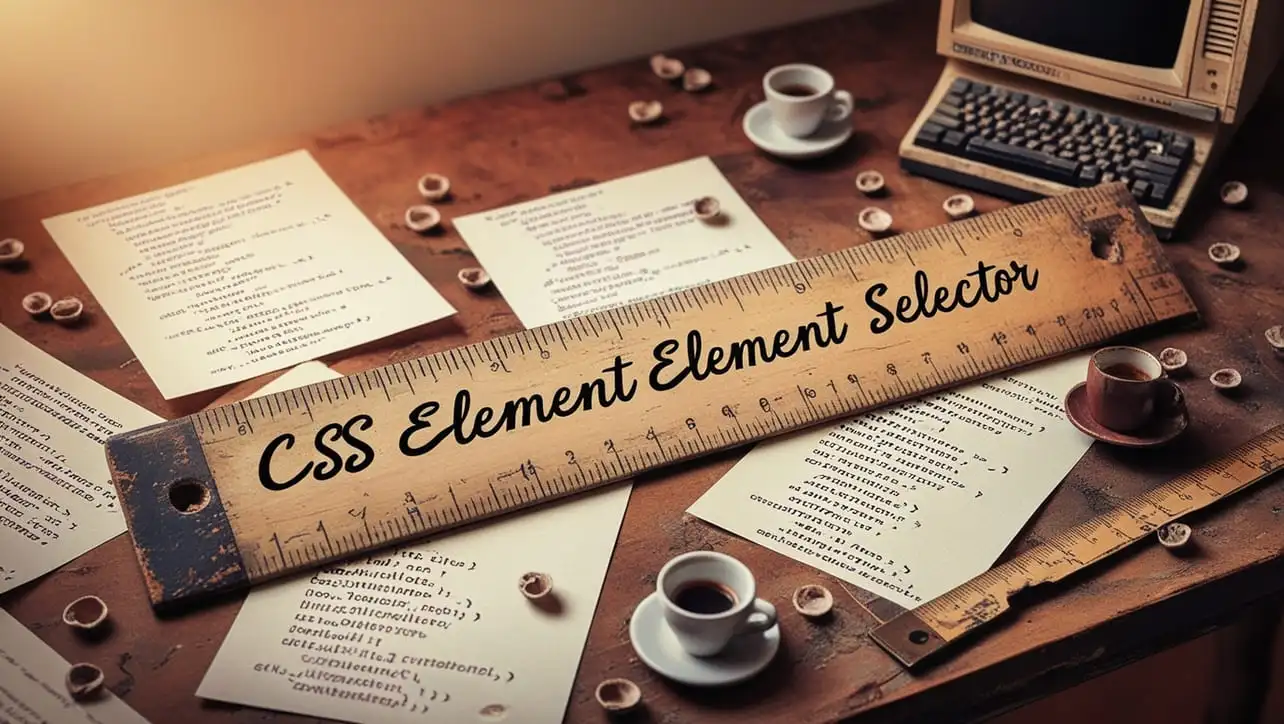
CSS How To
Learn how to use CSS to style your web pages with simple, step-by-step guides. From beginner basics to advanced techniques, our tutorials cover everything you need. Master CSS layout, selectors, properties, and more. Elevate your web design skills with practical ‘CSS How to’ examples.


CSS Length
CSS length units define the size of elements in web design, such as width, height, margins, and padding. Common units include pixels (px), em, rem, and percentages (%). Lengths can be absolute or relative, allowing flexible layouts across devices. Mastering CSS length enhances responsive and adaptive web designs.


CSS Editors
CSS Editors are tools that simplify the process of writing and editing CSS code, offering features like syntax highlighting, autocompletion, and error checking. These editors help developers design and style websites efficiently. Popular options include Visual Studio Code, Sublime Text, and Brackets. Choose the right editor to streamline your CSS workflow.


CSS element,element Selector
The CSS element,element selector allows you to target multiple HTML elements and apply the same style to them. By separating elements with a comma, you can group them together efficiently. This simplifies your CSS and ensures consistency across selected elements. Use this selector to streamline styling for various tags.


CSS element > element Selector
The CSS element>element selector targets direct child elements of a specified parent. It applies styles to child elements nested immediately within the parent, offering precise control over element hierarchy. This selector helps maintain clean, structured code and improves styling efficiency in web design.


CSS element+element Selector
The CSS element+element selector targets the adjacent sibling of a specified element. It applies styles to an element immediately following another, ensuring precise control over layout and design. This selector helps manage sibling elements for cleaner, more efficient CSS. Ideal for enhancing structured web designs.


CSS element1 ~ element2 Selector
The CSS element1~element2 selector selects all element2 siblings that follow element1 in the DOM. It’s useful for targeting elements in a document flow without nesting. Enhance layouts by styling adjacent elements effectively. Boost your CSS skills with this powerful sibling selector!


CSS element.class Selector
The CSS element.class selector targets a specific HTML element with a defined class. It allows you to style elements based on both their type and class name. This selector improves styling precision and flexibility, making it easier to apply customized designs across a website. Perfect for refining web layouts and ensuring consistency.


CSS element element Selector
The CSS element element selector selects a specific element within another element, allowing you to style nested elements. It targets child elements only when they appear inside a specific parent. This selector enhances precision in styling complex HTML structures. Perfect for refining web design layout.


CSS element Selector
The CSS element selector targets HTML elements directly by their tag name, applying styles to all instances of that element on the page. It’s simple and widely used for defining consistent styles across elements like headings, paragraphs, or lists. Ideal for basic styling, it’s essential in web design for uniform formatting.


CSS .class Selector
The CSS .class selector targets elements with a specific class attribute, applying styles to multiple elements at once. It’s a powerful way to group and style elements efficiently. This selector begins with a dot (.) followed by the class name, ensuring uniform design across your web pages. Ideal for modern, scalable web development.


CSS #id Selector
The CSS #id selector targets a specific element with a unique ID on a webpage, allowing for precise styling. It’s useful when you want to apply custom styles to one unique element without affecting others. This selector enhances web page control and improves user experience. Perfect for efficient, targeted design.


CSS ::first-line Selector
The CSS ::first-line selector targets the first line of a block-level element. It allows you to apply specific styles, like font size or color, to this initial line, enhancing readability and design. Perfect for styling headers or introductory text, it ensures your content stands out. Ideal for creating visually appealing and engaging web pages.


CSS ::marker Selector
The ::marker selector in CSS targets list item markers, such as bullet points or numbers. It allows you to customize their style, including color, size, and font. Ideal for enhancing list aesthetics, ::marker offers greater control over list presentation. Use it to create unique and visually appealing lists for your website.


CSS * Selector
The CSS * selector, also known as the universal selector, targets every element within a webpage. It’s commonly used for applying global styles, such as resetting margins and padding. This selector is highly versatile and can simplify styling across all HTML elements. Ideal for developers looking to maintain consistency in web design.

![CSS [attribute$=value] Selector](https://codetofun.com/wp-content/themes/codetofun/images/large/css-attribute-dollar-equal-value-selector.webp)
CSS [attribute$=value] Selector
The CSS [attribute$=value] selector matches elements with an attribute that ends with a specific value. It’s useful for targeting elements like links with certain file extensions. This selector enhances control over styling based on attribute values. Optimize your designs with more precise CSS targeting.

![CSS [attribute^=value] Selector](https://codetofun.com/wp-content/themes/codetofun/images/large/css-attribute-selector.webp)
CSS [attribute^=value] Selector
The CSS [attribute^=value] selector matches elements with an attribute whose value starts with a specified string. It’s useful for targeting elements based on partial attribute values, improving flexibility in styling. This selector enhances your ability to apply styles dynamically in modern web design.

![CSS [attribute=value] Selector](https://codetofun.com/wp-content/themes/codetofun/images/large/css-attribute-equal-value-selector.webp)
CSS [attribute=value] Selector
The CSS [attribute=value] selector targets elements with a specific attribute value, allowing precise styling. Ideal for targeting elements based on their attributes, it enhances control over your design. Easily apply styles to elements that meet particular criteria, improving design consistency. Discover the power of attribute selectors to fine-tune your web styling.







